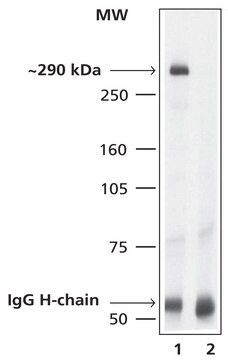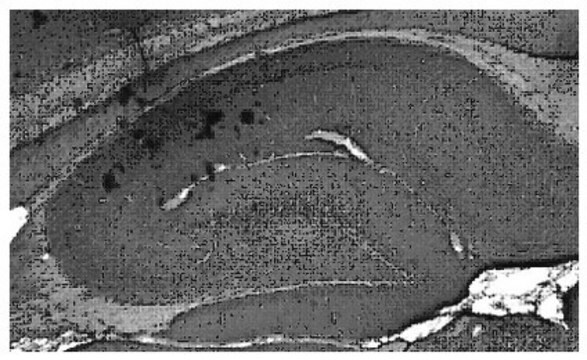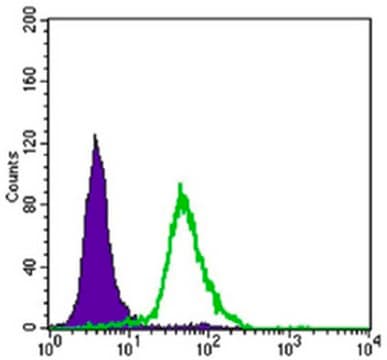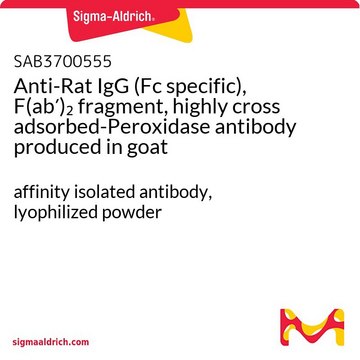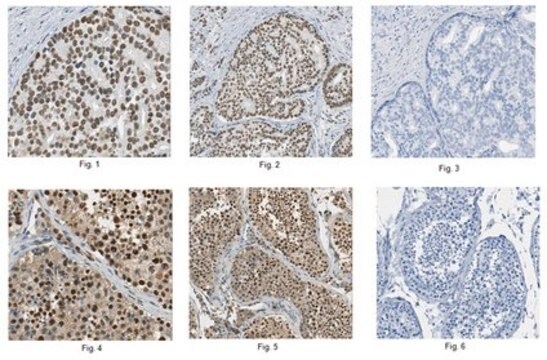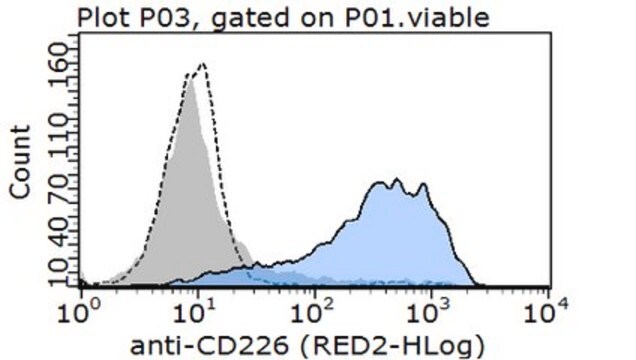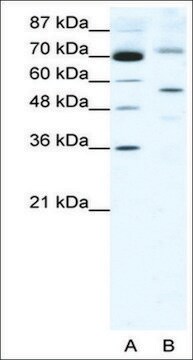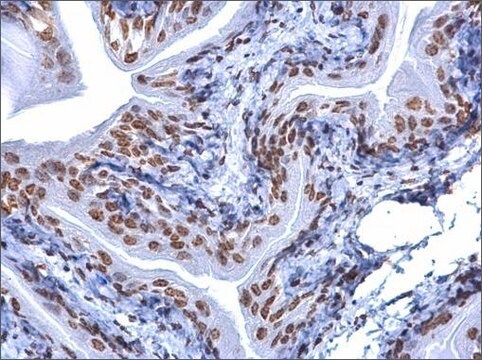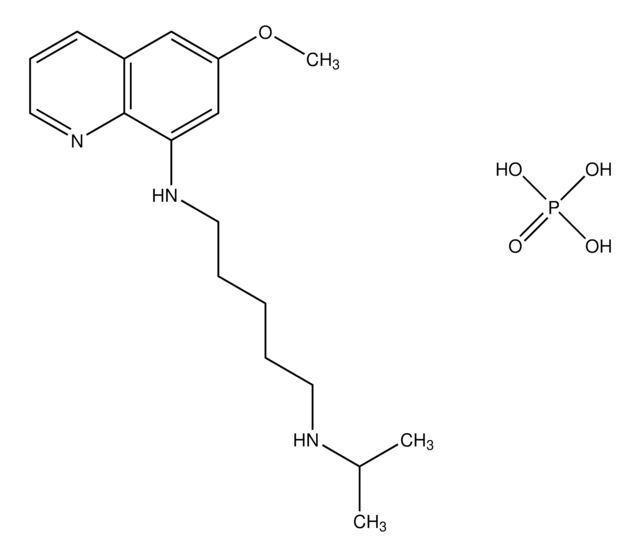ST1099
Anti-TORC2 (454-607) Rabbit pAb
liquid, Calbiochem®
Autenticatiper visualizzare i prezzi riservati alla tua organizzazione & contrattuali
About This Item
Codice UNSPSC:
12352203
NACRES:
NA.41
Prodotti consigliati
Origine biologica
rabbit
Livello qualitativo
Forma dell’anticorpo
serum
Tipo di anticorpo
primary antibodies
Clone
polyclonal
Stato
liquid
non contiene
preservative
Reattività contro le specie
human, mouse, rat
Produttore/marchio commerciale
Calbiochem®
Condizioni di stoccaggio
OK to freeze
Isotipo
IgG
Condizioni di spedizione
wet ice
Temperatura di conservazione
2-8°C
modifica post-traduzionali bersaglio
unmodified
Descrizione generale
Rabbit polyclonal antibody supplied as undiluted serum. Recognizes the ~79-85 kDa TORC2 protein.
Recognizes the ~79-85 kDa TORC2 protein in primary hepatocytes, HepG2, NIH3T3, Min6, and FAO cells.
TORCs (Transducers Of Regulated cAMP Response Element-Binding (CREB) protein) are members of a conserved family of co-activators that enhance CRE-dependent transcription by a phosphorylation-independent interaction with the bZIP DNA binding/dimerization domain of CREB. Studies suggest that TORC phosphorylation and nuclear/cytoplasmic shuttling play an important role in the regulation of gluconeogenesis by cAMP.
This Anti-TORC2 (454-607) Rabbit pAb is validated for use in Immunoblotting, Immunoprecipitation for the detection of TORC2 (454-607).
Immunogeno
Human
a recombinant protein consisting of amino acids 454-607 of mouse TORC2 fused to GST
Applicazioni
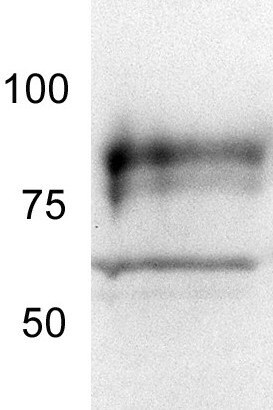
Immunoblotting (1:2000, see comments)
Immunoprecipitation (1:100, see comments)
Attenzione
Toxicity: Standard Handling (A)
Stato fisico
Undiluted serum.
Ricostituzione
For long-term storage, aliquot and freeze (-20°C). In the case of storage at -20°C, avoid freeze/thaw cycles.
Risultati analitici
Positive Control
Primary rat hepatocytes, HepG2, NIH3T3, Min6, and FAO cells
Primary rat hepatocytes, HepG2, NIH3T3, Min6, and FAO cells
Altre note
Screaton, R.A., et al. 2004. Cell119, 61.
This antibody has been used to detect endogenous TORC2 by immunoblotting. For immunoprecipitation, 4 µl antibody in a total volume of 400 µl has been tested. May also detect a protein at ~60 kDa, which may be a degradation product of TORC2. Antibody should be titrated for optimal results in individual systems.
Note legali
CALBIOCHEM is a registered trademark of Merck KGaA, Darmstadt, Germany
Non trovi il prodotto giusto?
Prova il nostro Motore di ricerca dei prodotti.
Codice della classe di stoccaggio
10 - Combustible liquids
Classe di pericolosità dell'acqua (WGK)
WGK 1
Punto d’infiammabilità (°F)
Not applicable
Punto d’infiammabilità (°C)
Not applicable
Certificati d'analisi (COA)
Cerca il Certificati d'analisi (COA) digitando il numero di lotto/batch corrispondente. I numeri di lotto o di batch sono stampati sull'etichetta dei prodotti dopo la parola ‘Lotto’ o ‘Batch’.
Possiedi già questo prodotto?
I documenti relativi ai prodotti acquistati recentemente sono disponibili nell’Archivio dei documenti.
Haitao Wang et al.
Molecular endocrinology (Baltimore, Md.), 22(7), 1596-1605 (2008-05-10)
The transcriptional coactivator peroxisome-proliferator-activated receptor-gamma coactivator-1alpha (PGC-1alpha) is induced in the liver in response to fasting and coordinates the activation of targets necessary for increasing energy production for gluconeogenesis and ketogenesis. After partial hepatectomy, the liver must restore its mass
Julie A Highland et al.
American journal of physiology. Cell physiology, 307(7), C611-C621 (2014-08-01)
Entrainment of the intrinsic suprachiasmatic nucleus (SCN) molecular clock to the light-dark cycle depends on photic-driven intracellular signal transduction responses of SCN neurons that converge on cAMP response element-binding protein (CREB)-mediated regulation of gene transcription. Characterization of the CREB coactivator
Aijun Qiao et al.
The Journal of cell biology, 216(3), 723-741 (2017-02-12)
Metabolic energy reprogramming facilitates adaptations to a variety of stress conditions and cellular dysfunction, but how the energetic demands are monitored and met in response to physiological stimuli remains elusive. Our data support a model demonstrating that heat shock factor
John Le Lay et al.
Cell metabolism, 10(1), 55-62 (2009-07-09)
The liver contributes to glucose homeostasis by promoting either storage or production of glucose, depending on the physiological state. The cAMP response element-binding protein (CREB) is a principal regulator of genes involved in coordinating the hepatic response to fasting, but
Rong Wu et al.
Cell metabolism, 29(3), 653-667 (2018-12-12)
Although emerging evidence indicates an important role of the circadian clock in modulating the diurnal oscillation of mammalian target of rapamycin complex 1 (mTORC1) signaling, the underlying molecular mechanism remains elusive. Here we show that Period2 (Per2), a core clock
Il team dei nostri ricercatori vanta grande esperienza in tutte le aree della ricerca quali Life Science, scienza dei materiali, sintesi chimica, cromatografia, discipline analitiche, ecc..
Contatta l'Assistenza Tecnica.